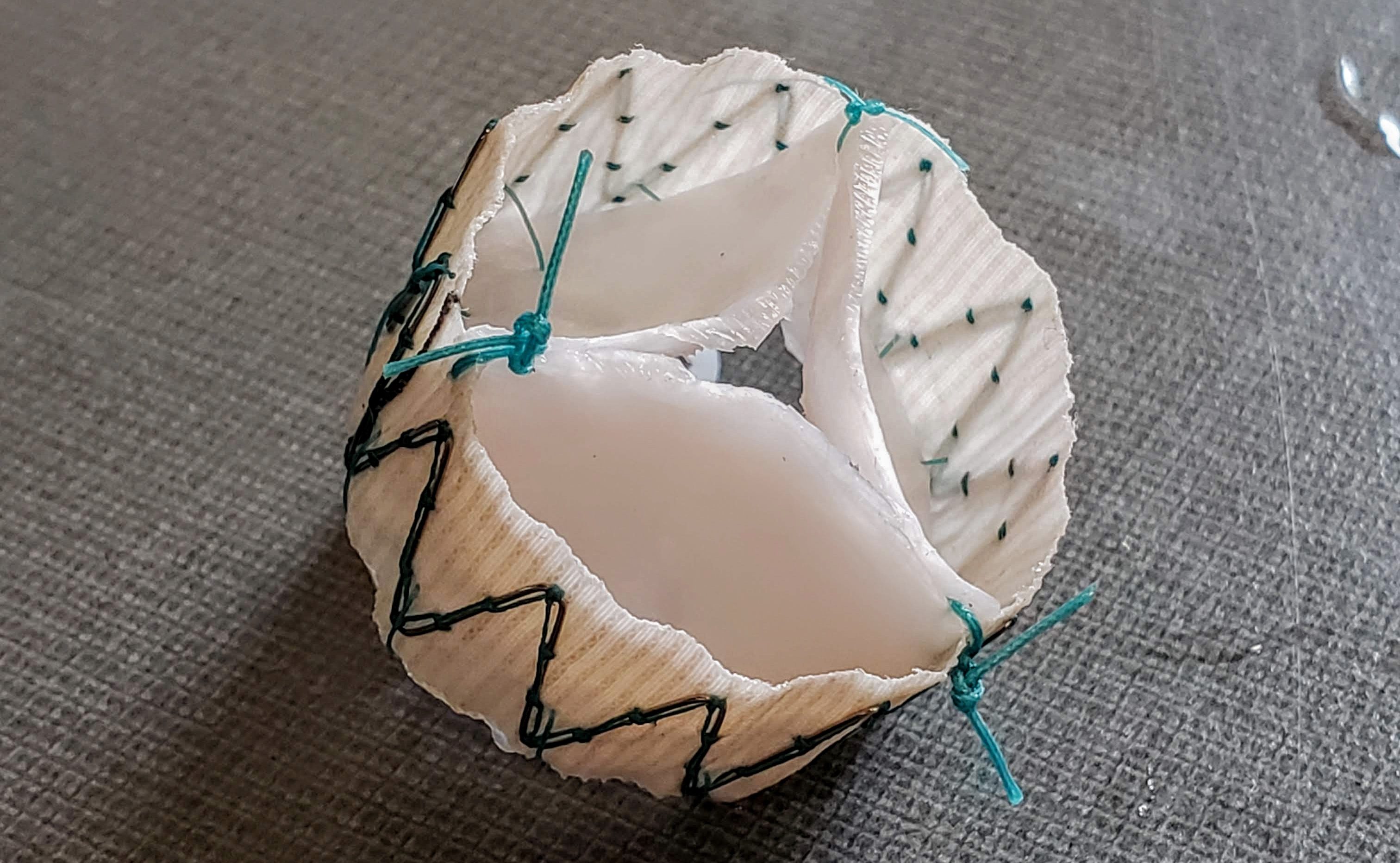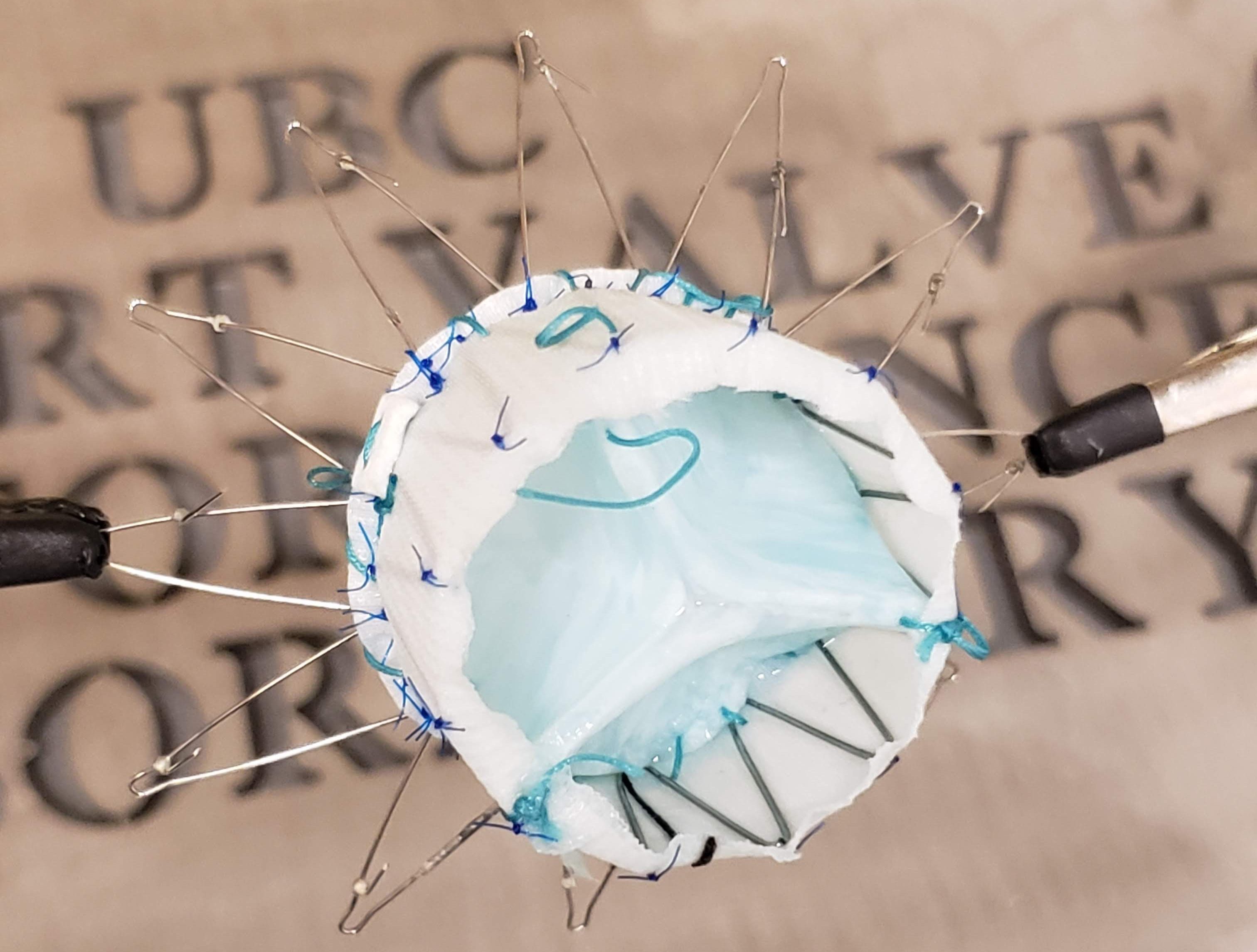Calcific Aortic Valve Disease (CAVD), also known as aortic stenosis, is the most significant cause of Heart Valve Disease (HVD) worldwide with regards to mortality. A calcified aortic valve can lead to the valve insufficiently opening and closing. This greatly reduces the cardiac output of a patient, along with putting great strain on their heart. Patients with perceived surgical risk, usually being health complications or the population aged 75 years or older, need a non-invasive procedure option to replace their incompetent heart valve.
This is where development into catheter-based valve implantation is vital. For patients who are unable to undergo open heart surgery, catheter-based (also known as percutaneous or transcatheter) valve options are their only chance at survival. The Heart Valve Performance Laboratory is working on further improving the commercialized percutaneous aortic valves, by introducing new synthetic materials, gaining a better understanding of the effects of the valve anchoring, and decreasing blood clot formation.


Mitral regurgitation is one of the most common forms of heart valve disorders and occurs when blood leaks back into the left atrium from the left ventricle during heart contraction. This is a result of an apposition failure between the valve leaflets from a functional or congenital cause. Roughly 1 in 10 of the population aged 75 years or older are diagnosed with mitral regurgitation. Also, up to one-half of patients with severe symptomatic mitral regurgitation are not referred for open-heart surgery.
As previously stated, percutaneous heart valves have already had successful implantation into the aortic and pulmonary valve position and commercial options are available. The success of these valves has led to a new focus on the development of the mitral valve position. To date, there is no commercially available percutaneous mitral valve options, only designs in the clinical and research stages. There is a huge unmet need in percutaneous mitral valve design, as it is only at the beginning stages of development. The Heart Valve Performance Laboratory is working on creating innovative percutaneous mitral valve designs, along with introducing synthetic materials to increase durability.